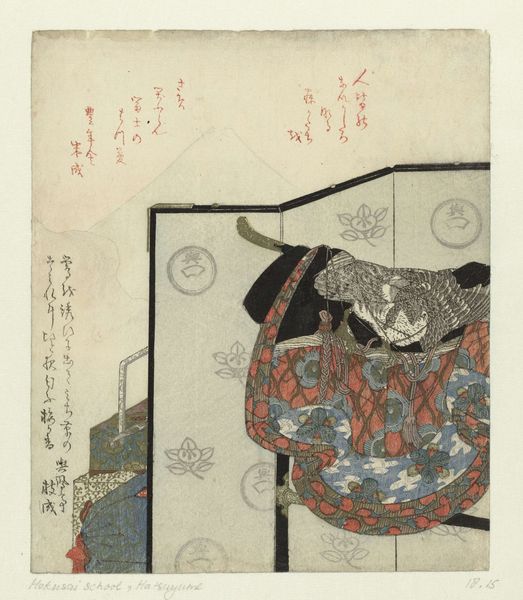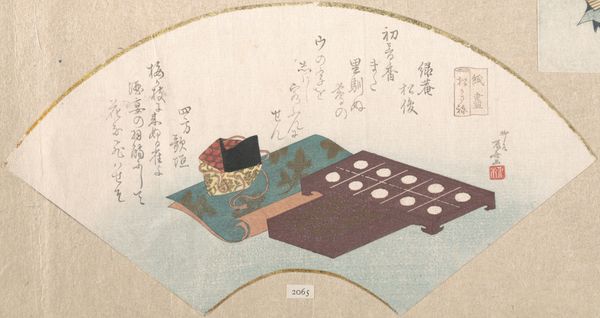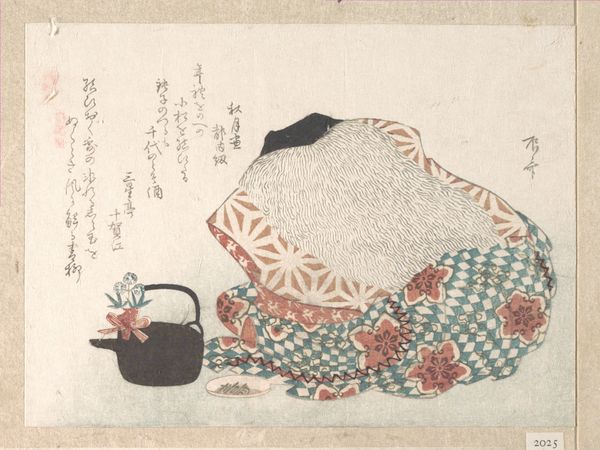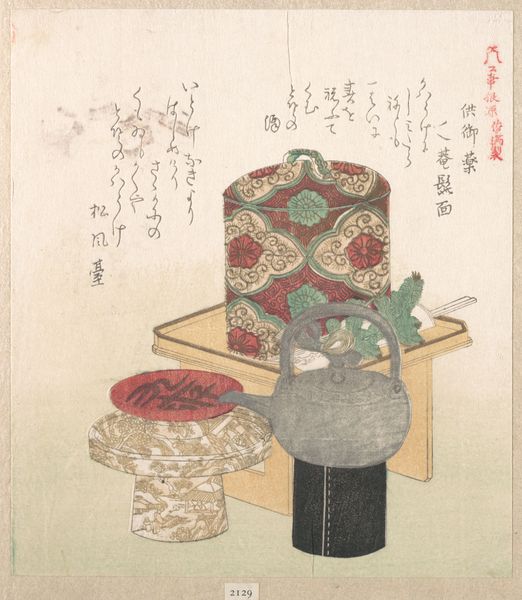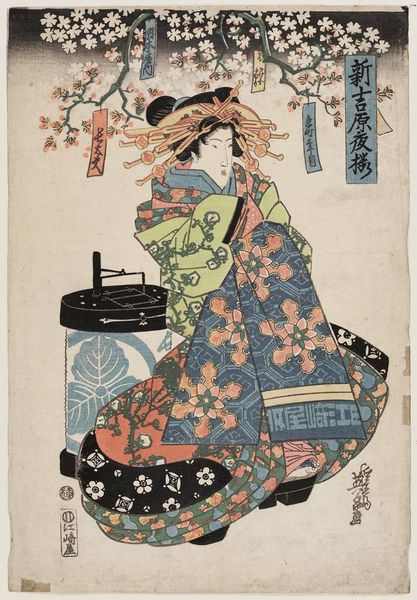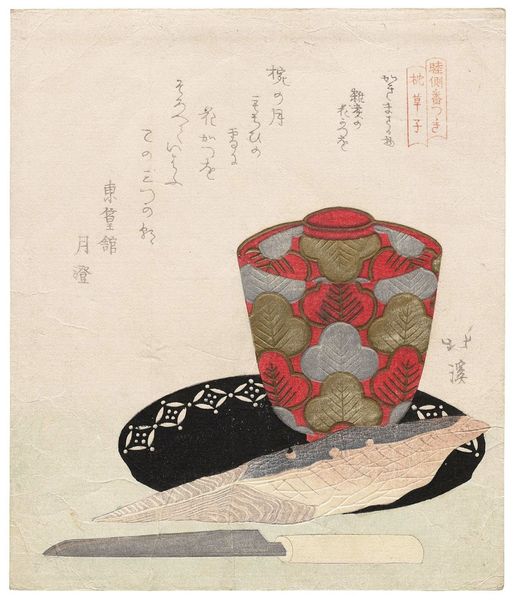
drawing, print, paper, ink, woodblock-print
#
portrait
#
drawing
#
narrative-art
# print
#
asian-art
#
ukiyo-e
#
figuration
#
paper
#
ink
#
woodblock-print
#
line
#
watercolour illustration
#
calligraphy
Dimensions: height 209 mm, width 182 mm
Copyright: Rijks Museum: Open Domain
"Kwast: Ono no Tōfū," was created by Yashima Gakutei, an artist working in Japan during the late Edo period, and is a woodblock print of modest size. Gakutei lived in a time of shifting social structures, where the merchant class was gaining prominence, influencing art and culture. This print depicts Ono no Tōfū, a celebrated calligrapher, deeply engrossed in his art. But why immortalize a calligrapher? Calligraphy was more than just writing; it was a spiritual practice, a way to cultivate oneself. In representing Tōfū, Gakutei connects us to the emotional intensity of artistic creation. The print acknowledges the cultural significance of the arts, while also hinting at the complex relationship between identity, tradition, and the individual. The artist seems to ask whether the image of a man creating art also generates societal ideals. Consider how Gakutei uses a traditional art form to reflect on the changing values of his own time, while evoking a sense of continuity and reverence for the past.
Comments
No comments
Be the first to comment and join the conversation on the ultimate creative platform.





